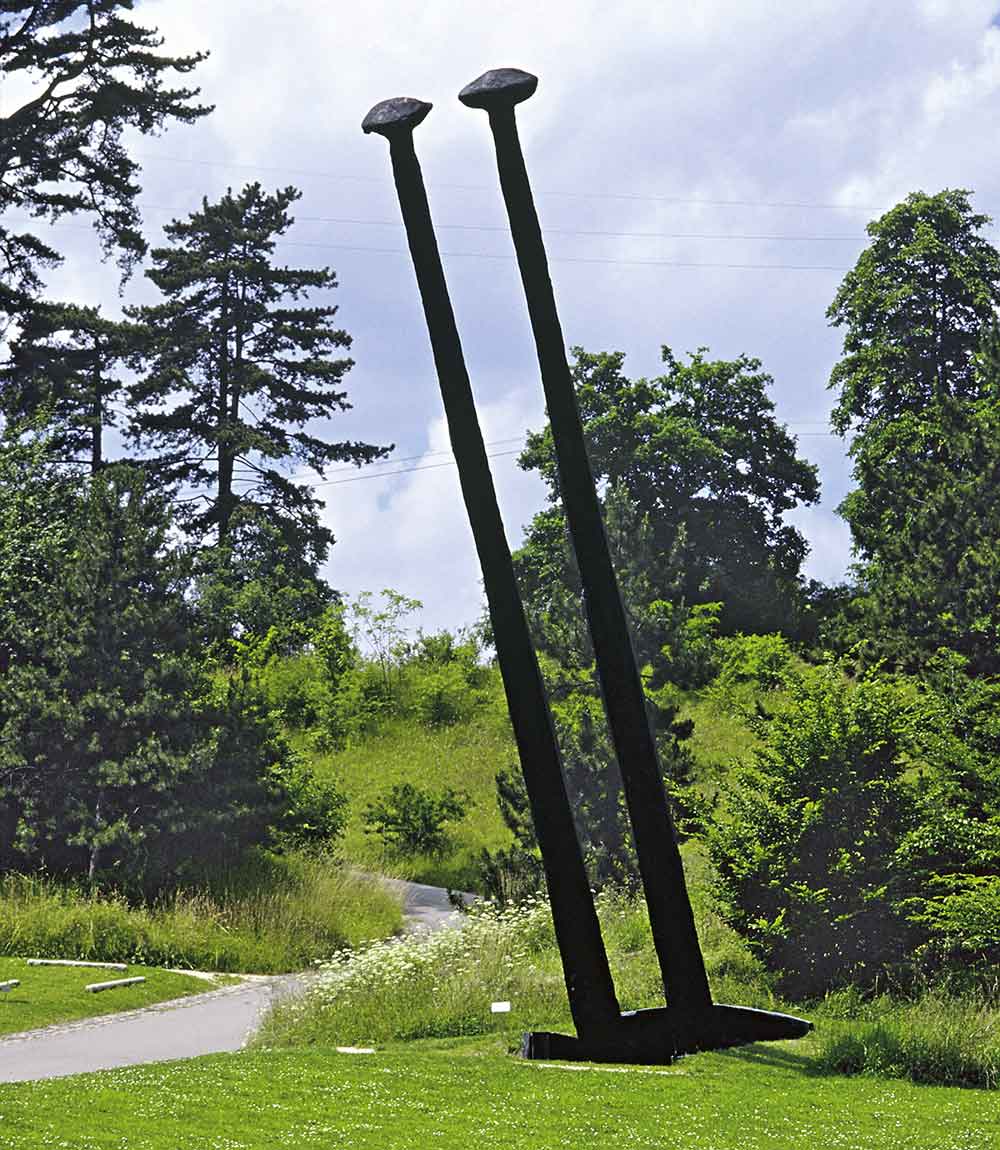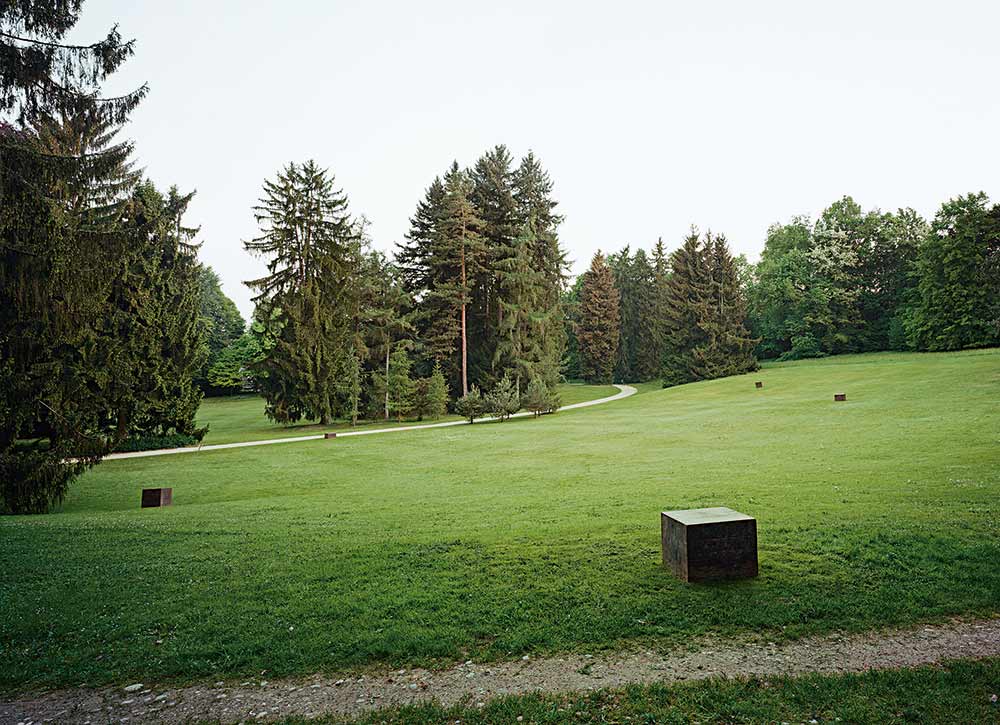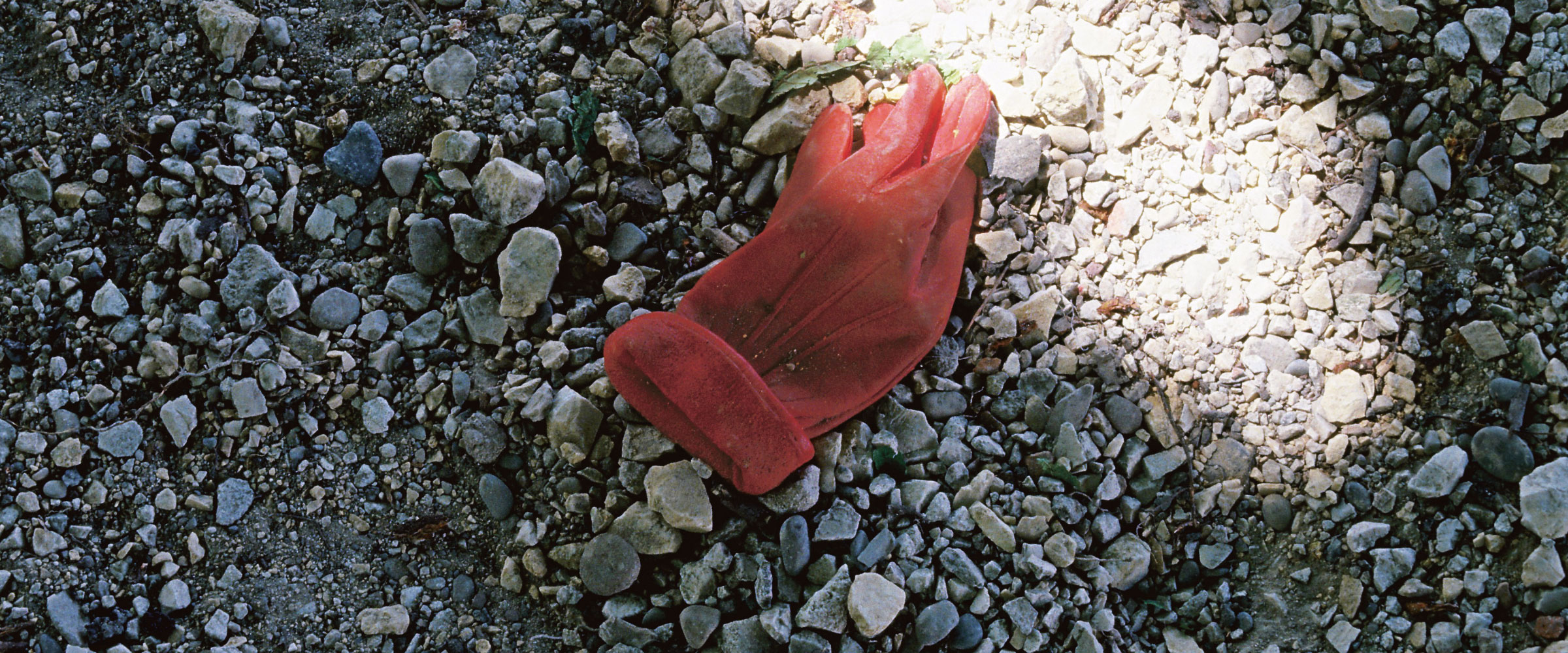Four of the art works in the collection of the Emanuel Hoffmann Foundation were created for specific sites outside Schaulager or can be seen in museums, where they are on permanent loan.
Works in other locations

Enzo Cucchi, Ohne Titel, 1984, Emanuel Hoffmann Foundation, on permanent loan to the Öffentliche Kunstsammlung Basel (Location Merian Garden, Brüglingen/Basel), © Bruno Bischofberger, Switzerland, Photo: Öffentliche Kunstsammlung Basel, Martin P. Bühler
This sculpture by Enzo Cucchi (*1949) was commissioned for the exhibition “Skulptur im 20. Jahrhundert”, organised by Ernst Beyeler, Reinhold Hohl and Martin Schwander and shown in 1984 in the Merian Park in Basel, following the exhibition of the same title held four years previously in the Wenkenpark in Riehen. Two posts, cast in bronze and almost twelve metres long, are set at an angle in the ground. The small ellipsoid heads lend them the appearance of elongated mushrooms, snails' feelers, antennae or – because of their bark-like surface structure – charred tree trunks. They conjure up archaic images, evoking the realms of myth and the unconscious – an effect reinforced by the skulls that cling like lichen to the vertical elements, spiralling up around one of the posts like a ladder to the sky. The raw power of the sculpture's presence reflects the untamed energy of natural forces, contrasting sharply with the humanized landscape of the park.
Location
Merian Park, Basel (near the Villa Merian)
Open daily from 8 a.m. until sunset.

Richard Serra, Open Field Vertical/Horizontal Elevations (for Breughel and Martin Schwander), 1979–1980, Emanuel Hoffmann Foundation, on permanent loan to the Öffentliche Kunstsammlung Basel (Location: Wenkenpark, Riehen/Basel), Photo: Tom Bisig, Basel
The colossal sculptures of Richard Serra (1939) are heavyweight site-specific works that formulate an aesthetic response to a landscape or topographical situation. Open Field Vertical/Horizontal Elevations (for Breughel and Martin Schwander)* was created between 1979 and 1980 for the exhibition “Skulptur im 20. Jahrhundert” in the Wenkenpark in Riehen. Unspectacular and unusually restrained, it comprises ten forged steel blocks, each weighing nearly 2.5 tonnes, which are positioned at selected topographical points in the park landscape. Serra chose the individual locations with the help of a map and by repeatedly walking over the terrain. There is no defined vantage point for viewing the work. Its object lies, instead, in the careful exploration of a network of relationships that extends over an area of some 9500 square metres. Walking down the slope, the viewer gradually apprehends that space is not a dimension independent of human involvement, but is actively generated, constructed and modified by the individual.
Location
Wenkenpark, Riehen
The installation is publicly accessible at all times.

Ilya Kabakov, Denkmal für einen verlorenen Handschuh, 1998 (Detail), Emanuel Hoffmann Foundation, on permanent loan to the Öffentliche Kunstsammlung Basel (Location St. Alban-Rheinweg, Basel), Photo: Öffentliche Kunstsammlung Basel, Martin P. Bühler
In front of the Kunstmuseum Basel | Gegenwart, within sight of the Rhine, a red woman's glove lies seemingly discarded on a patch of gravel under a chestnut tree. Grouped around the glove are nine panels arranged in a semicircle, like music stands set up for a concert. Each panel is inscribed with a text in four languages (French, English, German and Russian) in which an imaginary character considers the lost glove and the associations to which it gives rise. The installation Denkmal für einen verlorenen Handschuh [Monument to a Lost Glove] by Ilya Kabakov (*1933) speaks of lovers' journeys, of feelings of loneliness, or annoyance at public disorder – inspired by the glove. The nine texts create a polyphony of mental images, memories and attitudes. The stories interrupt the everyday routine of casual passers-by, and draw them – if they take the time - into the mental worlds of others.
Location
Rhine promenade in front of the Kunstmuseum Basel | Gegenwart
The installation is accessible at all times.

Jean Tinguely, Méta-Harmonie II, 1979, Emanuel Hoffmann Foundation, gift of Paul Sacher 1980, on permanent loan to the Öffentliche Kunstsammlung, Basel, Photo: Bisig & Bayer, Basel
The sculpture Méta-Harmonie II, by Jean Tinguely (1925–1991), stands in the Museum Tinguely, where it has been on permanent loan since 1996. The monumental, three-part structure, mounted on wheels, is almost seven metres wide and four metres high. It is a striking example of Tinguely's installations built from scrap metal, incorporating elements of sound and movement. The artist described Méta-Harmonie II as a “sound-mixing machine”, involving the interaction of several dozen wheels, in differing materials and sizes. The sculpture also includes a variety of used musical instruments, including a piano, drums and plastic keyboards, played by an assembly of batons, wheels and puppets, which in turn are driven by motors and V-belts. The wheels, rotating at a leisurely but varying pace, create a randomly generated carpet of sound.
Location
Museum Tinguely, Basel
Accessible with a valid entrance ticket for the Museum Tinguely.
- Works in other Locations(pdf, 949.38 KB)
- Map of other Locations(pdf, 83.55 KB)
Ilya Kabakov, Denkmal für einen verlorenen Handschuh, 1998 (Detail), Emanuel Hoffmann Foundation, on permanent loan to the Öffentliche Kunstsammlung Basel (Location St. Alban-Rheinweg, Basel), Photo: Öffentliche Kunstsammlung Basel, Martin P. Bühler

